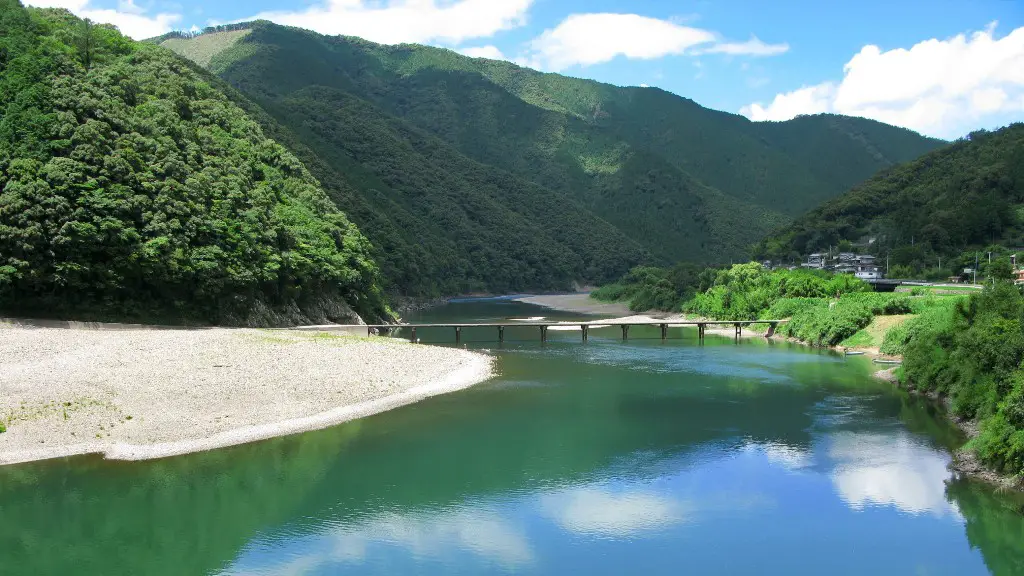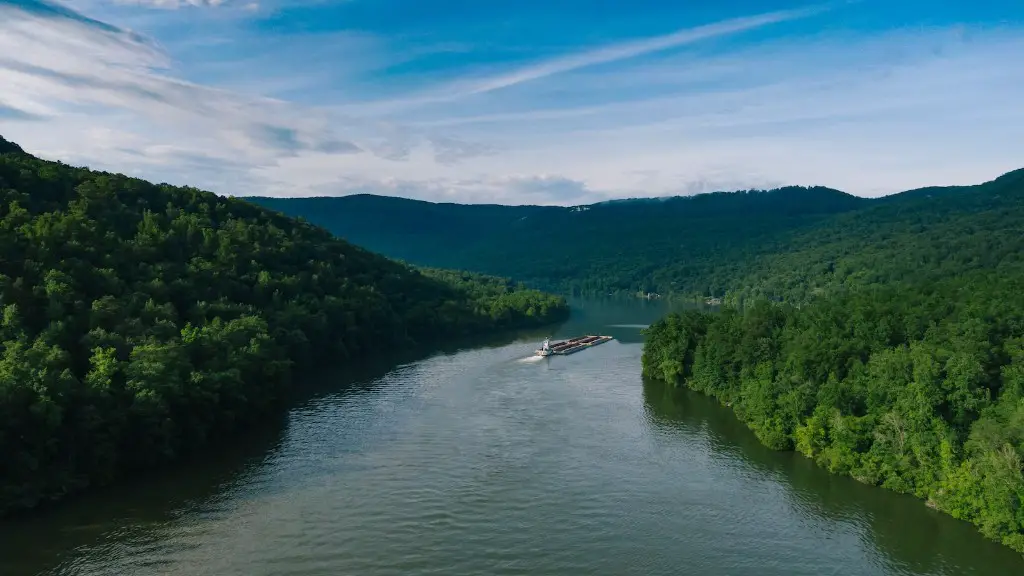The Amazon River is a river in South America that runs through the Amazon rainforest. The river is the largest river in the world by discharge, and the second longest by length. The Amazon River is one of the major rivers of the world, and it is estimated that up to 20% of the world’s river water flows through the Amazon basin. The river has been heavily polluted by humans for many years, and this pollution has had a negative impact on the environment and the local people who rely on the river for their livelihoods.
There is no easy answer to this question as it depends on a variety of factors, including the definition of pollution and the specific location within the Amazon River basin. However, it is generally accepted that humans do pollute the Amazon River to some degree. Pollution can come from a variety of sources, including industrial and agricultural waste, sewage, and even household garbage. While some pollution is due to accidents or natural disasters, much of it is the result of human activity.
How do humans pollute the Amazon river?
The Amazon rain forest is one of the most important ecosystems in the world. It is home to an incredible diversity of plant and animal species, and it plays a vital role in the global climate. However, this fragile ecosystem is under threat from human activities.
Mining, logging, ranching, agriculture, and oil and gas extraction have all put pressure on the Amazon rain forest. This has led to deforestation and habitat loss, which has had a devastating impact on the forest’s plant and animal populations. In addition, this has also contributed to climate change, as the Amazon rain forest plays a vital role in the global carbon cycle.
It is crucial that we take action to protect the Amazon rain forest. We need to reduce our impact on this fragile ecosystem, and we need to ensure that any development is sustainable. Otherwise, we could lose this vital ecosystem forever.
The main types of soil contamination in the Amazon Basin Rainforest are from mercury, cyanide and contamination from pesticides. Mercury contamination is found in many areas of the Amazon basin especially along the Tapajos River where gold mining is carried out by an estimated million miners. Cyanide is used in the process of gold mining and is also found in tailings dams where it can easily leach into the soil and ground water. Pesticide contamination is also a problem in the Amazon basin, due to the widespread use of pesticides in agriculture.
Is the Amazon rainforest being polluted
The Amazon rainforest has long been touted as a weapon in the fight against climate change, but a new study has found that it is actually becoming part of the problem. The study, published in Nature, found that the rainforest is now emitting more carbon dioxide than it is removing from the atmosphere. This is due to the destruction of the rainforest, which releases the carbon dioxide that was previously stored in the trees. The study found that the destruction of the Amazon could account for up to 10% of the world’s total carbon dioxide emissions. This is a significant increase from the previously estimated 3-5%. The study highlights the importance of protecting the rainforest, which is a vital part of the world’s climate change mitigation efforts.
It’s estimated that around 17% of the world’s forests have been destroyed in the last 50 years. That’s a huge area, and it’s only going to get worse if we don’t do something about it. The problem is that clearing forests is often seen as more economically viable than keeping them standing. We need to change that perception and start valuing forests for all the benefits they provide.
Is the Amazon river clean or dirty?
The Amazon River is one of the largest rivers in the world and it carries a lot of sediment (particles of mud and sand), which gives the water a muddy-brown color. Its largest tributary (branch), the Rio Negro, or black river, is filled with chemicals washed out of soil and plants, making the water very dark.
The Amazon River is one of the world’s great rivers, and it is unfortunately true that some areas of the river are quite polluted. This is particularly the case in areas of the river close to large cities, where waste from these cities is often dumped directly into the river. This can include trash, sewage, plastics, oil, and chemicals, all of which can have a detrimental effect on the river’s ecosystem.
Why is the Amazon river so dirty?
The Amazon River is one of the largest rivers in the world and is responsible for a large amount of sediment entering the Atlantic Ocean each day. This sediment is made up of bits of rocks, soil, and clay and gives the river its milky brown color. The sediment is important for the ecology of the Atlantic Ocean and helps to maintain a balance in the ocean’s ecosystem.
A
This is a huge amount of pollution, and it’s coming from just one company. Amazon needs to do better in terms of reducing its carbon footprint. There are a number of ways they could do this, such as investing in renewable energy, increasing energy efficiency, and reducing waste.
How much pollution is Amazon responsible for
Amazon’s enterprise-wide carbon footprint continues to grow, although at a slower pace than in previous years. The company’s total footprint for 2019 was 5,117 million metric tons of carbon dioxide equivalent (CO2e), up from 4,605 million in 2018. This increase was driven primarily by growth in Amazon’s physical store footprint and customer trips to those stores. For 2020, Amazon’s total footprint is expected to grow to 6,064 million metric tons CO2e, an increase of 18%.
The ever-growing human consumption and population is the main driver of deforestation. We rely on forests for many resources, including timber, paper, and food. As our population continues to grow, we are putting more and more pressure on forests. If we don’t change our ways, we could see forests disappear entirely within our lifetime.
What is harming the Amazon rainforest?
The stated drivers of deforestation in the Amazon are largely related to commercial activity in the region, specifically ranching and farming. While fires are also a significant factor in terms of deforestation, it is generally accepted that these are mostly set by people – either deliberately or accidentally – in order to clear land for ranching or farming purposes. Even though the Brazilian government has put measures in place to try and stop this deforestation, it has been largely unsuccessful due largely to the lasting economic benefits that these commercial activities bring to the people involved.
The table above shows the estimated loss of forest cover in the Brazilian Amazon from 2017 to 2020. As you can see, the Forest cover has decreased significantly during this period, from 809% of the 1970 cover remaining in 2017 to 803% in 2020. This trend is expected to continue in the future, with the Forest cover decreasing to below 800% of the 1970 cover by 2021.
Why are humans burning the Amazon
It is estimated that roughly 80 percent of rainforest fires are intentionally set by people. In Brazil, many of these fires are set by cattle ranchers and land-grabbers who illegally clear land for their business. The global meat industry is one of the driving forces behind this destruction, as they are willing to sacrifice forests for profits. This is not only devastating for the environment, but also for the indigenous people who call the Amazon home.
The report by MAAP is alarming, to say the least. The loss of more than 85 million hectares of Amazon forest is a huge blow to the planet, and the effects will be felt for years to come. The loss of these forests will cause climate change, devastating loss of biodiversity, and other environmental problems. We must do whatever we can to prevent further loss of these important ecosystems.
How do humans pollute the rainforest?
Fertilizers and pesticides used in agricultural areas adjacent to forests can take a toll on rainforest wildlife, including critical pollinators and seed dispersers. Overuse and misapplication of nitrogen fertilizers can cause “dead zones” of low oxygen content in river deltas and the ocean.
This can have a devastating impact on local ecosystems, and can even lead to the collapse of fisheries. It is therefore essential to use these products responsibly, and to carefully consider their potential impacts on the environment before using them.
The Umngot River is one of the cleanest rivers in the world. The water is so crystal clear that you can see the pebbles and stones under the water clearly visible. The river is located in the state of Meghalaya in India, about 100 km from Shilong.
Can we swim in Amazon River
The Amazon is one of the most exciting and diverse swimming spots in the world. With around 60,000km of inland waterways, countless lakes, lagoons and beaches, there are plenty of opportunities to explore the Amazon by swimming. Whether you’re looking for a relaxing swim in a lagoon or an adventurous swim in a river, the Amazon has something to offer everyone.
The Amazon is the world’s largest rainforest and is home to an incredible amount of biodiversity. Yet despite its vastness and importance, the Amazon faces a deluge of threats. A dam-building spree across the basin is disrupting fish migration and nutrient cycling, large-scale deforestation is destroying habitats and increasing sedimentation, pollution from mining and agribusiness is affecting aquatic ecosystems. These threats are putting the future of the Amazon and its biodiversity at risk.
Warp Up
Yes, people pollute the Amazon River. The river is polluted with sewage, agricultural runoff, and industrial waste.
People pollute the Amazon River because they want to get rid of their waste and they do not care about the ecosystem. The Amazon River is one of the world’s most important ecosystems and it is being destroyed by pollution.





